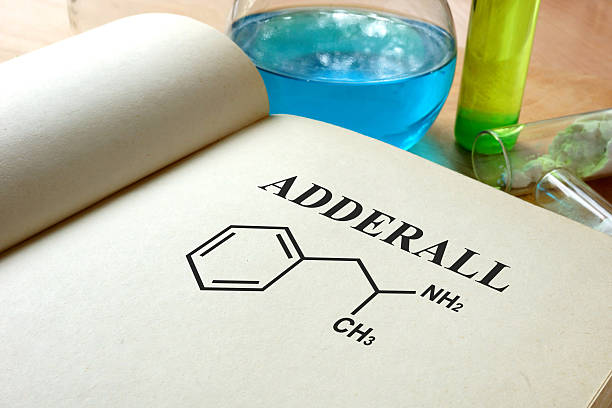Anabolic-steroid synthetic derivatives of testosterone — have been around for decades, but recent evidence suggests use is shifting and growing in new groups. Studies and public-health reports show rising use among recreational bodybuilders, young men influenced by social media aesthetics, and a notable increase among some female gym populations. The black market and easy access through online vendors and social platforms have made AAS more available, while influencer culture often normalizes or minimizes the harms. These patterns have pushed researchers and harm-reduction groups to call for better surveillance and targeted education.
What people are taking: types and patterns of AAS use
AAS come in many chemical forms. Common agents encountered in illicit use include testosterone esters (e.g., enanthate, cypionate), nandrolone, stanozolol, oxandrolone, trenbolone, and methandrostenolone — each with different androgenic/anabolic properties and side-effect profiles. Some users “stack” multiple agents, cycle them (periods of use followed by abstinence), or combine them with other appearance-and-performance enhancing drugs (APEDs) such as growth hormone, insulin, or selective androgen receptor modulators (SARMs). Medical formulations of androgens still play legitimate roles in therapy (e.g., hypogonadism), but the supra-therapeutic doses and unregulated sources used recreationally carry much higher risks.
Who’s using steroids now — and why it matters
Recent surveys and studies show heterogeneous prevalence: extremely high rates in competitive bodybuilding cohorts, notable usage in recreational gym communities, and worrying increases among younger males and an expanding number of women seeking muscularity. Motivations range from performance enhancement and aesthetic goals to social pressures and the perceived short-cuts promoted online. Because patterns of use now include more polypharmacy (multiple drugs) and clandestine sourcing, health risks are both broader and harder to predict. Public-health researchers have urged more targeted harm-reduction and education efforts.
How anabolic-steroid affect the brain — short term and long term
AAS influence brain function through hormonal and neural pathways. In the short term, supra-physiologic androgen exposure can alter mood, increase irritability or impulsivity, and — in some users — precipitate episodes of aggressive or manic behavior. These acute psychiatric effects are frequently reported in case series and surveys. Over longer durations, imaging and cognitive studies suggest possible structural and functional changes: reduced activity or altered connectivity in frontal brain regions (linked to impulse control and decision-making), changes in reward circuitry (which can affect motivation and addictive behaviors), and deficits in memory or executive function in long-term users. There is also growing evidence of neuroinflammatory and cerebrovascular effects tied to prolonged AAS exposure.
Mental health: aggression, mood disorders, and dependence
A sizable body of literature connects AAS misuse with a higher incidence of mood disorders (depression, mania), episodes of heightened aggression or “roid rage,” and increased impulsivity. Not everyone who uses AAS develops these problems — genetic vulnerability, dose, duration, co-use of other substances, and pre-existing psychiatric history all shape outcomes — but the associations are strong enough that clinicians treating users are on alert for psychiatric complications. Moreover, some users develop dependence-like behaviors: continued use despite harms, difficulty stopping, and withdrawal syndromes (including depression and fatigue) when stopping abruptly.
Brain imaging and physiology: what studies are finding
Neuroimaging studies (MRI, PET) and physiological investigations have found concerning signals in long-term AAS users: alterations in prefrontal and limbic structures, changes in cerebral perfusion, and signs consistent with neurotoxicity or vascular strain in some cohorts. While study populations are often small and confounded by co-use of other substances and lifestyle factors, the convergence of behavioral, clinical, and imaging data raises plausible mechanisms for AAS-linked cognitive and emotional dysfunction. Recent reviews call for longitudinal research to clarify causation and the reversibility of changes after stopping AAS.
Physical risks that interact with brain health
Steroid misuse is not only a psychiatric problem: cardiovascular harm (hypertension, adverse lipid changes, arrhythmias, and early atherosclerosis), liver strain, and endocrine disruption are well documented, and each of these can secondarily affect brain health. For example, cerebrovascular compromise (strokes, reduced cerebral perfusion) and metabolic-related cognitive decline are plausible downstream harms of chronic AAS misuse. Researchers have highlighted cases and cohort findings that tie long-term AAS exposure to premature cardiovascular disease — a risk with clear implications for the brain.
A note on harm reduction and clinical care
Because many steroid users do not present to traditional medical services — and because online markets supply unregulated products — harm-reduction approaches are increasingly recommended. These include non-judgmental clinical engagement, screening for psychiatric symptoms and cardiovascular risks, education on safer dosing and infection prevention (injecting practices), and programs to help with tapering and treating withdrawal or comorbid substance use. Policymakers and clinicians also emphasize the need to address upstream drivers (social media pressures, gym culture) with public education and better regulatory oversight of illicit supply.
Bottom line
Anabolic steroids remain a potent shortcut to muscle and performance, but contemporary evidence shows their use is widening into new populations and combining with other risky behaviors. The brain is a key target of AAS effects: from short-term mood and aggression changes to possible longer-term cognitive, structural, and vascular harms. Because of the complexity of use patterns today — online availability, polypharmacy, and social media promotion — the public-health response must combine clinical care, harm reduction, and broader education to reduce avoidable brain and cardiovascular damage.



